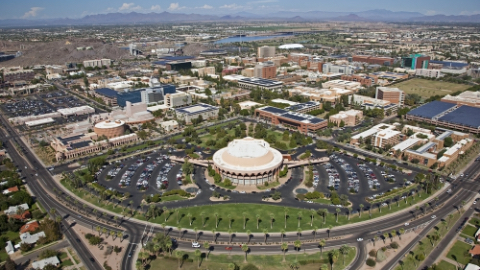
Researchers at Arizona State University (ASU) have been assessing how urban agriculture could help achieve the sustainability goals set by Phoenix’s city council in 2016. The goals involve transportation, water stewardship, air quality, and food.
The team analyzed the potential benefits of growing crops in three types of urban areas in the city: vacant lots, rooftops, and building facades. The results showed that 71% of Phoenix’s available areas for urban agriculture could come from existing buildings as opposed to vacant lots. Using the 5.4% of city space that is available for urban agriculture could supply the city with nearly 183,000 tons of fresh produce per year – meeting 90% of the current annual fresh produce consumed by residents.
“Our analysis found that if Phoenix used only about 5% of its urban spaces (2% of its land, and about 10% of its building surfaces) for urban agriculture, the city could meet its sustainability goal concerning local food systems,” said Matei Georgescu, associate professor in the ASU.
Besides food production, the researchers found that additional benefits exist:
- the use of vacant lots would increase green space by 17% and reduce the number of areas lacking public parks by 60%;
- rooftop agriculture would reduce energy use in buildings by 3% per building per year; and,
- rooftop agriculture would displace more than 50,000 metric tons of CO2 annually – the equivalent of nearly 6,000 homes’ energy use for one year.
“Our work demonstrates the multitude of ways that urban agriculture can serve cities, beyond merely the somewhat limited focus on food production,” said Georgescu, also a senior sustainability scientist in the Julie Ann Wrigley Global Institute of Sustainability at ASU.